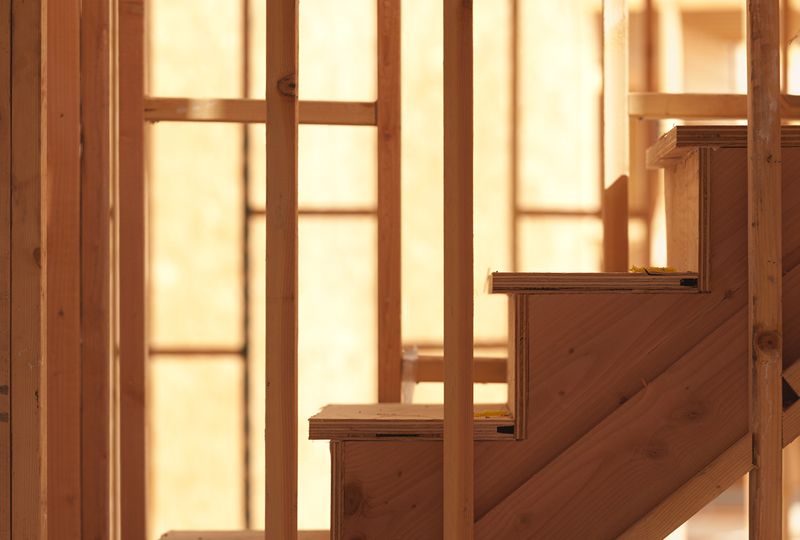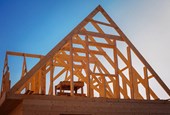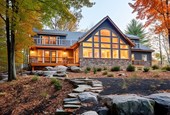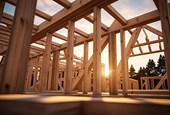
Housing inventory is, quite simply, the number of homes for sale on the market. And in our market and across the country, inventory in lower and mid-tier price points is near or at historic lows due to overwhelming buyer demand. Buyers in these tiers are feeling the pinch of the tight market and are wondering if they’ll ever have the ability to comfortably choose a home from several ideal options.
Here are insights on three primary reasons for this shortage and why new construction developments may help us to move closer to market equilibrium.
Reason 1: Potential sellers aren’t sure they can buy their next home easily
Today’s homeowners know their home is likely to earn top dollar due to our low inventory, but they’re also intimidated by the frenzy of buying their next home in today’s competitive environment. For many, the uncertainty of finding their next home — or the fear that they’ll settle for something that’s not perfect — is enough to keep them from selling.
How new construction can solve it: New construction can react to emerging trends better than existing housing stock because it’s built to perfectly match buyer demand. Today’s would-be sellers may find that selecting everything from their home’s lot and location, to the exterior siding, to the interior layout and finishes, is preferable to competing over a shortage of homes that don’t match their exact needs.
So, what are today’s trends? While the McMansion was a reaction to the high-flying economy of the late 1990s and early 2000s, excess square footage is less en vogue these days. Today, new construction is taking a hint from the uber-popular craftsman-style homes and farmhouses found in older cities and towns.
Builders are banking on buyers who love details of older homes (like those gorgeous craftsman columns and brackets or the wrap-around front porches on a farmhouse) but don’t have the patience or wherewithal to renovate a 100-year home into a modern masterpiece.
And as millennials spend more of their early adulthood in cities, making them more amenable to smaller yards and economized square footage, builders are looking at the advantage of building closer to the city in first-ring suburbs that are highly desirable (and accessible) for this emerging group of homebuyers.
Reason 2: Baby boomers aren’t ready to downsize from their family homes
Many baby boomers are slowly headed toward retirement, but many aren’t interested in a traditional retirement community.
There are dozens of reasons they may be aging in place for now, including the recession’s effect on their retirement savings and their role as a caregiver or financial provider for their parents or adult children.
But there’s another reason boomers aren’t selling: At ages 54-72, many are still too active and young-at-heart to move into a retirement community or an assisted living center. They may not want a five-bedroom home in the suburbs, but they do want to cook their own meals, entertain family and friends and remain on-the-go as they move toward full-time retirement.
Boomers own a large percentage of our market’s single-family homes, and by staying in place, there is a shortage of those homes for sale in both the city and surrounding suburbs.
How new construction can solve it: In the past, new construction typically followed two common paths: Communal living in condos and townhomes and individual ownership of larger single-family homes. Today, many boomers are looking for something in between and today’s builders are eager to provide it.
Single-story, new construction villas are becoming increasingly popular for the pre-retirement and just-retired set. These communities, which are popping up all over Minnesota and western Wisconsin, offer an array of features that are important to this demographic, including:
- One-story, single-family living that will allow them to age in place.
- Economized space overall, but plenty of room to entertain family and friends.
- Centralized location near their children or long-term community.
- The convenience of a walkable area with nearby trails, parks, restaurants and retail, but not necessarily located in a city like Minneapolis or St. Paul.
- Modern amenities, new finishes and low-maintenance appliances — this generation is done with fixer-uppers.
Wondering what these homes look like and if there are any of these communities being built near you? Here’s a search of all one-story, new construction homes in our area.
Reason 3: A market shortage as buyers outnumber homes for sale
The lack of movement among the first two groups serves to create gridlock and increased competition among would-be buyers of entry level and move-up homes. And since new construction, which was booming before the market correction in 2008, has been slow to pick up as the economy has improved, our housing inventory has remained pretty static.In order to achieve a balanced market, we’d need our total number of buyers to be static, too.
Of course, that couldn’t be further from the case. In recent years, our local pocketbooks and population have surged and a new generation — the much-discussed millennials — have entered the marketplace at last.
All this is to say that there are, in 2018, many more buyers than there were in previous years, but there aren’t enough existing homes available for them to purchase.
How new construction can solve it: New construction is one of the simplest ways to help correct our inventory shortage, and builders are starting to quicken their pace to keep up with buyer demand. In April, new construction listings increased 12 percent year-over-year, but pending sales increased 14 percent*.
This means that buyer competition in the new construction space is quite strong — builders aren’t putting as many houses on the market as they’re able to sell — but the overall increase in new listings does help to ease some of the burden of our local low inventory.
*Based on information from the REGIONAL MULTIPLE LISTING SERVICE OF MINNESOTA, INC. for the 13-County Twin Cities metro area for April 2018.
So, how soon can new construction solve all our inventory challenges?
It’s important to remember that new construction can help ease the burden of low inventory, but it won’t happen overnight. New construction can’t solve our buyer demand entirely because:
- New construction homes do tend to be more expensive on average and they may not be the right solution for buyers with lower budgets.
- City regulations and permitting can be slow-going, which can slow down builders’ progress.
- There’s a shortage of qualified construction workers and tradespeople in our market. Some left the field during the recession and haven’t returned, while other would-be workers pursued four-year degrees over trade schools.
- After losing money during the market downturn, builders and developers are understandably hesitant to begin building at pre-recession levels.
- Even after a development has been approved and sold, it can take three months to a year for a new construction home to be move-in ready.
Ready to look at new construction?
The lesson here is that if you’re hoping for a new construction home, you should get started now to find something that meets your needs and that can be ready as soon as possible.
A REALTOR® can help you demystify the process of purchasing a brand-new home, including the tricky step of finding the development that works best for your budget and location preferences.
Reach out today to Edina Realty’s customer care team, who can match you with the right new construction specialist in your area.









 ©2025 Prosperity Home Mortgage LLC®. (877) 275-1762. 3060 Williams Drive, Suite 600, Fairfax, VA 22031. All first mortgage products are provided by Prosperity Home Mortgage, LLC®. Not all mortgage products may be available in all areas. Not all borrowers will qualify. NMLS ID #75164 (For licensing information go to: NMLS Consumer Access at
©2025 Prosperity Home Mortgage LLC®. (877) 275-1762. 3060 Williams Drive, Suite 600, Fairfax, VA 22031. All first mortgage products are provided by Prosperity Home Mortgage, LLC®. Not all mortgage products may be available in all areas. Not all borrowers will qualify. NMLS ID #75164 (For licensing information go to: NMLS Consumer Access at